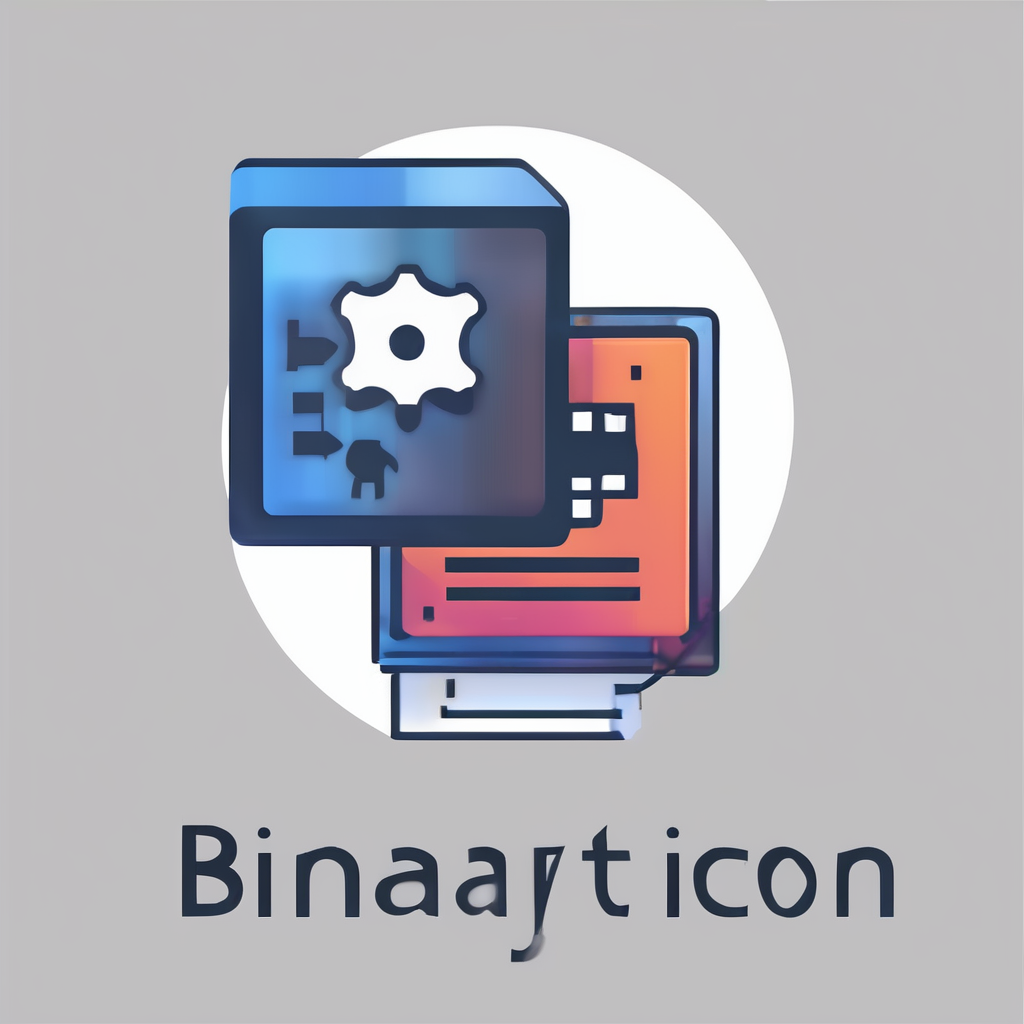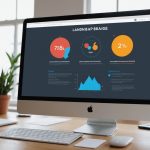Unlocking Tech Marketing Success: Leveraging Social Media Analytics for Strategic Insights
In the ever-evolving landscape of digital marketing, social media has become an indispensable tool for businesses to connect with their audience, drive engagement, and ultimately, boost their brand presence. However, managing social media campaigns effectively requires more than just posting content; it demands a deep understanding of your audience, their preferences, and how they interact with your brand. This is where social media analytics comes into play, providing the valuable insights necessary to drive strategic decisions and optimize your marketing efforts.
Understanding Social Media Analytics
Social media analytics is the process of gathering, analyzing, and interpreting data from social media platforms to understand audience behavior, track performance, and make data-driven decisions. This subset of data analytics is crucial for any business aiming to maximize its online presence.
Also read : Top strategies for organizations to evaluate the success of their digital transformation efforts
Key Metrics to Track
To get the most out of social media analytics, you need to focus on the right metrics. Here are some key performance indicators (KPIs) that should be on your radar:
- Engagement Rates: This includes likes, comments, shares, and other interactions with your content. High engagement rates indicate that your content is resonating with your audience[3].
- Follower Growth: Monitoring how your follower count changes over time helps you understand the effectiveness of your content strategy.
- Content Performance: Analyzing which types of content (e.g., videos, infographics, posts) perform best can guide your future content creation.
- Audience Sentiment: Tracking mentions and sentiment analysis helps you understand public perception of your brand and respond promptly to negative feedback[3].
- Reach and Impressions: These metrics tell you how many people are seeing your content and how often they are seeing it.
Leveraging Data for Strategic Insights
Social media analytics tools are more than just data aggregators; they are powerful instruments for strategic decision-making. Here’s how you can leverage these tools to gain valuable insights:
This might interest you : Unlocking software success: how agile methodologies transform project management
Analyzing Audience Behavior
By studying the actions, clicks, and responses of your audience on social media, you can gauge their interest, spot trends, and offer better products or services. For instance, social listening tools help you keep track of various social media channels to spot opportunities and problems. This involves combining listening and reporting into an overall analysis of performance[4].
Enhancing Customer Experience
Social media analytics can significantly improve customer experience by allowing you to identify and expand on micro-movements that can lead to brand loyalty. Behavioral analysis tools executed across social media channels help you understand customer preferences and tailor your marketing strategies accordingly. For example, analyzing Amazon product reviews, tweets, and Facebook posts can provide insights into trends and help in managing existing products and developing new ones[4].
Optimizing Content Strategy
Understanding which types of content truly connect with your audience is crucial for optimizing your content strategy. Social media analytics tools help you dive into the underlying meaning of the data, beyond superficial metrics like likes and follower counts. By tracking engagement rates and content performance, you can refine your strategies and focus on high-performing content types and posting schedules[3].
Automating Social Media Marketing
Automation is a key component of modern social media marketing, and it can significantly enhance your efforts by streamlining mundane tasks and freeing up time for more creative and strategic work.
Automating Content Creation and Research
AI platforms like ChatGPT are revolutionizing social media marketing by automating content creation and research. These tools can craft engaging posts, generate creative ideas, and even respond to comments. By analyzing trends and preferences across the web, AI helps tailor content to audience tastes, enhancing engagement and allowing marketers to focus on strategy and growth[1].
Managing Paid Social Ad Campaigns
Social media marketing automation also streamlines the management of paid social ad campaigns. By automating tasks such as ad scheduling, audience targeting, and bid adjustments, you can ensure that ads are displayed at optimal times to the most relevant audiences, maximizing ROI. Real-time analytics enable quick adjustments to campaigns based on performance data, optimizing ad spend and improving campaign results[1].
The Role of Predictive Analytics
Predictive analytics is another trend that is gaining traction in social media marketing. This technology uses machine learning to predict the future performance of certain posts and campaigns, allowing savvy social media teams to optimize their efforts.
Forecasting Future Performance
Predictive analytics tools can analyze historical data and real-time trends to forecast how well a post or campaign might perform. This enables marketers to make informed decisions about which content to prioritize and when to post it for maximum impact. For instance, predictive scheduling can help you identify the best times to post content based on when your audience is most active and engaged[1].
Enhancing Campaign Efficiency
By leveraging predictive analytics, businesses can optimize their campaigns for better results. These tools uncover patterns in customer behavior and provide actionable insights, allowing marketers to deepen connections with their audiences and maximize the efficiency and impact of their efforts. As Alissa Santoro, VP of marketing at EXTE, noted, “Predictive technologies that leverage advanced data analytics empower brands to forecast and optimize campaign success across all channels”[5].
Data Visualization and Reporting
Data visualization is an essential element of a successful social media analytics strategy. Here’s how it can help:
Turning Data into Insights
Social media analytics tools gather data from multiple platforms and turn it into clear, easy-to-read reports and visualizations. This process makes complex data accessible and actionable, enabling businesses to react swiftly to changing trends and maintain a leading edge. Data visualization tools convert raw data into meaningful insights, similar to a translator converting a foreign language into your native tongue[3].
Creating Custom Analytics Reports
You can combine metrics and charts for various social media channels to create custom analytics reports. These reports provide a comprehensive view of your social media performance, helping you identify areas for improvement and opportunities for growth. By tracking key performance metrics regularly, you can adapt your approach, improve your content, and maximize the impact of your social media presence[1].
Future Trends in Social Media Automation
As technology continues to evolve, several trends are set to shape the future of social media marketing.
The Impact of Artificial Intelligence
AI is already having a significant impact on social media automation. Brands are increasingly using AI for customer support activities, with a 318% increase reported in Hootsuite’s 2025 social media trends report. However, as AI becomes more prevalent, maintaining authenticity while using automation will be crucial. Consumers are becoming more discerning, with 62% less likely to engage with content if they know it was created using an AI-powered tool[1].
Hyper-Personalization
AI-driven hyper-personalization is becoming non-negotiable for brands that want to stand out. This involves using advanced data analytics and machine learning algorithms to create highly individualized customer journeys. By analyzing real-time data from multiple touchpoints, these tools enable marketers to predict customer intent, recommend relevant products or services, and deliver dynamic content that resonates with each user on a personal level. As Sophie Musumeci, CEO and founder at Real Entrepreneur Women, emphasized, “Customers expect tailored experiences, not generic marketing”[5].
Practical Insights and Actionable Advice
Here are some practical tips to help you leverage social media analytics effectively:
Choose the Right Tools
Selecting the right social media analytics tool is crucial. Each tool has its own perks and potential drawbacks, so it’s essential to get familiar with the core features of top platforms to make an informed choice that aligns with your goals[3].
Develop a Strategic Plan
Using social media analytics tools requires a clear, strategic plan. Without a solid approach, the data you gather risks becoming a meaningless pile of numbers instead of actionable insights. Think of it like building a house; you wouldn’t just stack bricks and wood randomly; you’d follow a detailed blueprint to create something strong and functional[3].
Monitor Key Metrics Regularly
Regular monitoring of key performance metrics facilitates adapting your approach, improving your content, and maximizing the impact of your social media presence. This continuous analysis is vital for remaining competitive and achieving long-term social media success[3].
In the digital age, social media analytics is no longer a luxury but a necessity for businesses aiming to thrive. By leveraging these tools, you can gain valuable insights into your audience, optimize your content strategy, and make data-driven decisions that drive your marketing efforts forward. Whether you’re automating mundane tasks, using predictive analytics to forecast future performance, or creating personalized customer journeys, the power of social media analytics is undeniable. As you navigate the complex landscape of digital marketing, remember that the key to success lies in turning raw data into meaningful, actionable insights that drive your business forward.
Table: Comparing Key Features of Social Media Analytics Tools
| Tool | Key Features | Target Audience | Pricing |
|---|---|---|---|
| Hootsuite | Bulk scheduling, real-time analytics, predictive scheduling | Businesses, Agencies | Varies by plan |
| Qualtrics XM Discover | Advanced AI and machine learning, sentiment analysis, customer and employee sentiments | Large Enterprises | Custom pricing |
| Teleprompter | Data visualization, competitive analysis, keyword and hashtag tracking | Small to Medium Businesses | Varies by plan |
| ChatGPT | AI-driven content creation, research, and customer support | All Businesses | Free and paid options |
This table provides a brief comparison of some popular social media analytics tools, highlighting their key features, target audience, and pricing models. Choosing the right tool depends on your specific needs and goals.
Detailed Bullet Point List: Benefits of Social Media Analytics
- Customer Experience: Incorporating behavioral analysis tools and techniques across social media channels helps identify and expand on micro-movements, leading to brand loyalty.
- Product Development: Reviewing social media elements like product reviews and posts informs how existing products are managed and how future products will be developed.
- Branding Options: Using sentiment analysis and natural language processing to track brand expectations, promote brand health, and incorporate new attributes of a given brand.
- Operational Efficiency: Applying deep analytic techniques to social media helps find more effective ways to measure demand, manage inventory, cut costs, and use resources productively.
- Competitive Edge: Tracking competitor activity to identify opportunities, refine strategies, and adapt to changing market dynamics.
- Data-Driven Decisions: Analyzing engagement rates, follower growth, and content performance to make informed decisions about social media growth strategies.
- Enhanced Engagement: Automating routine tasks to focus on high-value-added creative aspects of marketing campaigns, improving the quality of ideas and content.
- Real-Time Insights: Providing real-time analytics to enable quick adjustments to campaigns based on performance data, optimizing ad spend and improving campaign results.










